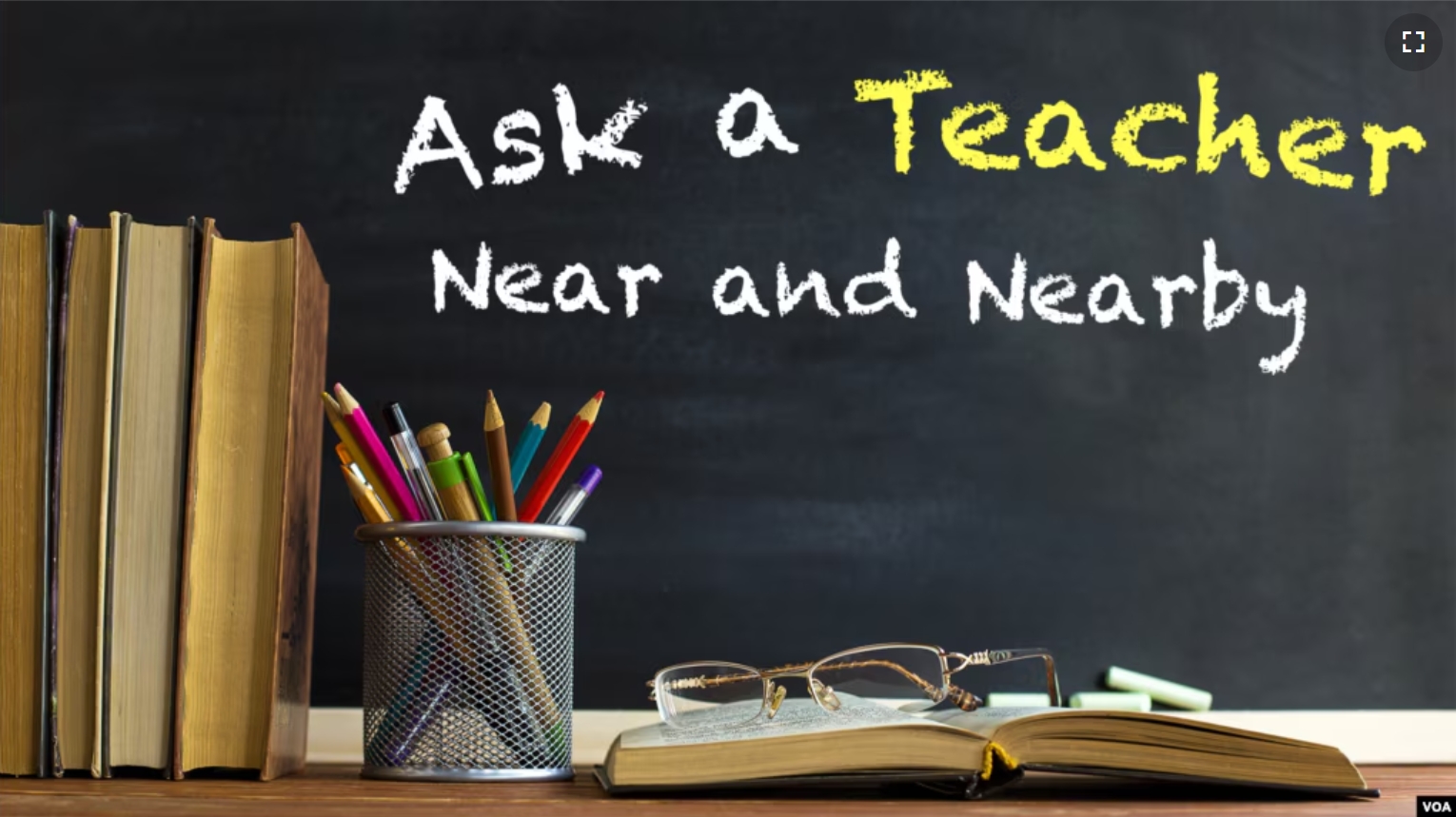Hello! This week on Ask a Teacher, we answer a question from Haruna in Japan about the usage of the words “near” and “nearby.”
Question
Dear Teacher,
Today, I have a question about two words, “near” and “nearby.”
What is [the] difference between these two words?
Thank you and best regards,
Haruna
Answer
I’m happy to answer this question, Haruna.
Both words can mean “close in distance to something.”
The word “near” also has other meanings, as we will see.
We can put the word “nearby” at the end of a sentence. For example, if you are in someone’s house and a person in the house says:
The market is nearby.
That means the market is close to the house. The speaker does not need to say the word “house” because the word “nearby” means close to the place already stated or known.
However, when we use the word “near” to say where something is, we say both places. The following example shows this:
Their house is near the market.
The following two examples also show this difference in usage between “nearby” and “near”:
The doctor’s office is nearby.
The doctor’s office is near the bank.
We can also use “nearby” as an adjective before a noun, as in this example:
Pollution from a nearby factory makes the air unhealthy to breathe.
Other uses of “near”
Next, let’s look at three other ways we can use the word “near.” We can use it as an adverb to express the idea that something will happen soon in the future, as in this example:
The end of our trip is near.
We can also use “near” as a compound adjective, as in the following example:
That old car is still in near-perfect condition.
Remember that when we write compound adjectives, we must put a hyphen, or short line, connecting the two adjectives.
Lastly, we can use the word “near” as a verb, meaning “getting close to in time,” as in this example:
The building project is nearing completion.
For our readers and listeners, what are your questions about American English? We’d like to hear from you. Send us an email at learningenglish@voanews.com. And please include where you are from in your email, too.
And that’s Ask a Teacher.
I’m Andrew Smith.
Andrew Smith wrote this lesson for VOA Learning English.
